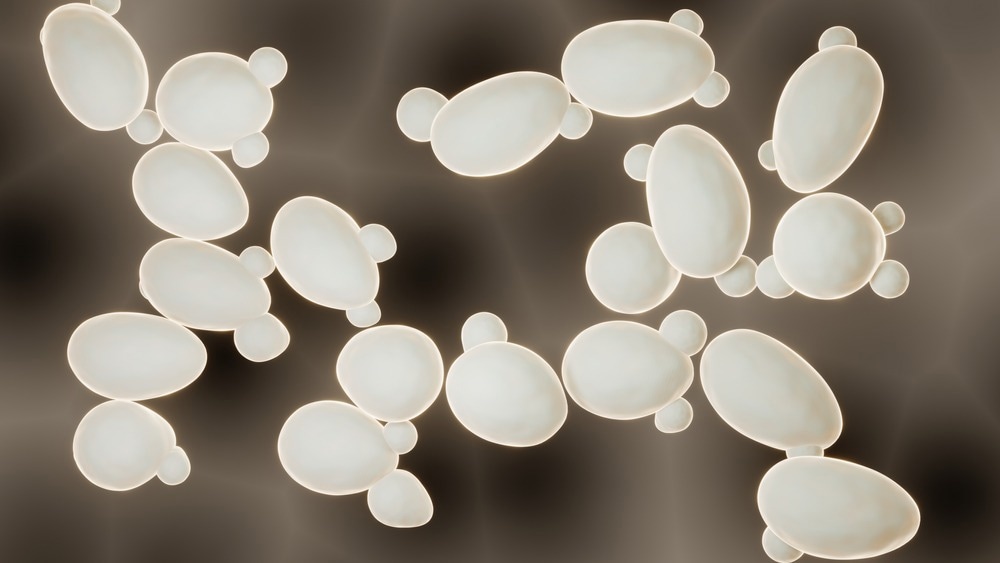Reviewed by Danielle Ellis, B.Sc.Nov 9 2023
Researchers crafted a chromosome entirely from the ground up, paving the way for the creation of the inaugural synthetic yeast in the world.
 Yeast puzzle. Image Credit: The University of Manchester.
Yeast puzzle. Image Credit: The University of Manchester.
Scientists at the Manchester Institute of Biotechnology (MIB) within The University of Manchester have developed the tRNA Neochromosome—a novel chromosome not found in nature.
This achievement is part of the broader Sc2.0 project, which has successfully synthesized all 16 native chromosomes in Saccharomyces cerevisiae, the common baker’s yeast. The ultimate goal is to integrate these chromosomes to construct a fully synthetic cell.
The international team has already combined six and a half synthetic chromosomes within a functional cell, marking the first instance of scientists creating a eukaryotic genome from scratch.
Yeasts play a crucial role in industrial biotechnological processes, facilitating the more efficient, economical, and sustainable production of valuable chemicals. They are commonly employed in the manufacturing of biofuels, pharmaceuticals, flavors, fragrances, as well as the well-known fermentation processes in bread-making and beer-brewing.

Image Credit: ART-ur/Shutterstock.com
The ability to rewrite a yeast genome from scratch opens up possibilities for creating a strain that is more robust, faster, tolerant to harsh conditions, and has a higher yield. Additionally, this process provides insights into fundamental genome aspects, addressing questions about how genomes are organized and evolve.
The culmination of 10 years of research from an international consortium of scientists, led by Professor Patrick Cai and The University of Manchester, is reflected in the findings of both projects.
These results, published in the prestigious journals Cell and Cell Genomics, signify a new chapter in engineering biology. The University of Manchester's research is prominently featured on the front covers of both journals.
This is an exciting milestone when it comes to engineering biology. While we have been able to edit genes for some time, we have never before been able to write a eukaryote genome from scratch.”
Patrick Cai, Professor and Chair, Synthetic Genomics, The University of Manchester
Cai added, “This work is fundamental to our understanding of the building blocks of life and has the potential to revolutionize synthetic biology which is fitting as Manchester is the home of the Industrial Revolution. Now, we’re at the forefront of the biotechnological revolution too.”
“What’s remarkable about this project is the sheer scale of collaboration and the interdisciplinarity involved in bringing it to fruition. We’ve brought together not only our experts here in the MIB, but also experts from across the world in fields ranging from biology and genomics to computer science and bioengineering,” continued Cai.
Cai is the international coordinator of the Sc2.0 project.
Dr Daniel Schindler, one of the two lead authors and group leader at the Max Planck Institute for Terrestrial Microbiology and the Center for Synthetic Microbiology (SYNMIKRO) in Marburg, added, “The international Sc2.0 is a fascinating, highly interdisciplinary project. It combines basic research to expand our understanding of genome fundamentals, but also paves the way for future applications in biotechnology and drives technology developments.
“The international and inclusive nature of the project has unleashed the science and seeded future collaborations and friendships. The Manchester Institute of Biotechnology, with its excellent research environment and open space, has always facilitated this.”
The tRNA neochromosome serves as the container and organizer for all 275 nuclear tRNA genes found in yeast.
Eventually, it will be integrated into the fully synthetic yeast, where the tRNA genes have been removed from the other synthesized chromosomes. In contrast to the other synthetic chromosomes in the Sc2.0 project, the tRNA neochromosome lacks a natural counterpart in the yeast genome.
Designed with the assistance of AI and computer-assisted design (CAD), the tRNA neochromosome was manufactured using state-of-the-art roboticized foundries. Its construction was finalized through comprehensive genome-wide metrology to ensure the optimal fitness of the synthetic cells.
The next phase involves collaborative efforts among researchers to merge all individual synthetic chromosomes into a complete synthetic genome. The ultimate Sc2.0 strain will not only stand as the world's inaugural synthetic eukaryote but also represent the first of its kind built by the international scientific community.
The potential benefits of this research are universal – the limiting factor isn’t the technology, it’s our imagination.”
Patrick Cai, Professor and Chair, Synthetic Genomics, The University of Manchester